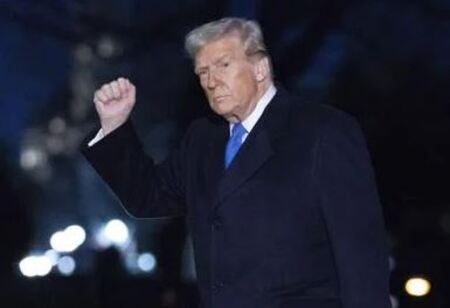
Trump Urges Trade Partners to Buy US Energy to Avoid Higher Tariffs


President Donald Trump has made it possible for trading partners to avoid additional tariffs by purchasing more American energy.
Trump attempted to retreat from a full-scale international trade war on Wednesday by pausing "reciprocal" tariffs on all nations but China.
To avoid increased charges on their exports, most countries now have a three-month window to negotiate bilateral agreements with the US and are subject to a base tariff rate of 10 percent.
Trump claims he wants to attain "energy dominance" and cut the US trade deficit. On Monday, he made a connection between those two objectives and demanded that the European Union purchase $350 billion worth of American energy to eliminate its trade surplus with the US.
The US-EU goods trade imbalance in 2024 was $235.6 billion, according to the Office of the US Trade Representative.
The world's largest producer of gas and oil is the US. It is the world's largest exporter of liquefied natural gas and the third-largest exporter of oil.
In 2024, energy accounted for around 15 percent of all US exports, according to Barclays analysis.
Since becoming office, Trump has worked to increase U.S. LNG exports, emphasizing the development of Alaska's potential.
On his first day in office, he signed an executive order giving the state's LNG development first priority, and in his March speech to Congress, he specifically mentioned the Alaska LNG project.
An 807-mile pipeline would carry natural gas from the state's North Slope to a liquefaction plant at Nikiski on the Cook Inlet as part of the proposed Alaska LNG project, where it would be exported to Asia.
One of the developers, Alaska Gasline Development, estimated in 2018 that the project would cost over $40 billion to complete.
Also Read: Paris AI Summit 2025: Fostering AI Advances in Every Sector Possible
Major buyers of U.S. LNG already include South Korea, Japan, and the European Union. According to Barclays, the EU purchased 39 percent of US LNG exports in 2024, with Japan coming in second at seven percent, South Korea at six percent, and India at five percent.

